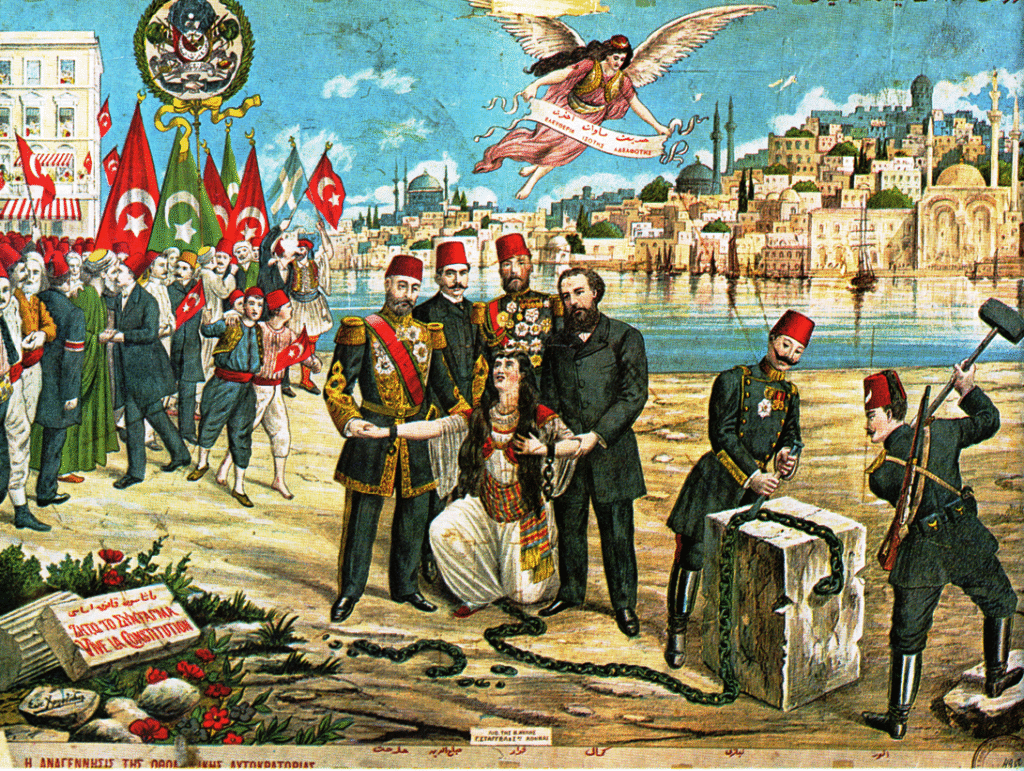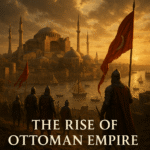
Why Did the Ottoman Empire Fall?
Why did the Ottoman Empire fall?At its height, the Ottoman Empire was a global powerhouse—spanning three continents, commanding lucrative trade routes, and boasting a sophisticated administrative system and formidable military.
Table Of Content
- Internal Political Corruption and Administrative Weakness – Why Did the Ottoman Empire Fall?
- 2. Military Decline and Outdated Tactics
- 3. Economic Stagnation and Trade Route Shifts
- 4. Rising Nationalism and Internal Revolts
- 5. European Imperialism and “The Eastern Question”
- 6. Failure to Modernize in Time
- 7. The Impact of World War I
- Conlusion
- Related Posts
It controlled key cities such as Constantinople (Istanbul), Cairo, and Baghdad, and served as a cultural bridge between East and West.
Yet, despite these peak achievements, the empire eventually succumbed to a gradual decline. Its fall was not the result of a single catastrophic event but rather a combination of internal weaknesses, external pressures, and systemic changes over time.
Understanding these factors offers valuable lessons in history, politics, and leadersh
These combined factors help answer the question: why did the Ottoman Empire fall?ip.
Internal Political Corruption and Administrative Weakness – Why Did the Ottoman Empire Fall?
Over time, the Ottoman administrative system, once efficient and merit-based, became plagued by corruption and favoritism. Key posts were increasingly awarded through personal connections or bribery rather than merit. Central authority weakened as the sultan’s control diminished and local power holders gained influence.
A notable example of this was during the reign of Sultan Ibrahim I (1640–1648), whose erratic leadership and reliance on corrupt court officials weakened state authority and drained the treasury. Such mismanagement allowed regional governors to grow more autonomous, undermining imperial unity.
- The Devshirme system, which once brought talented individuals into the bureaucracy and military, declined in effectiveness.
- Provincial governors often acted independently, prioritizing personal wealth over state stability.
- Palace intrigue and frequent changes in leadership led to inconsistent governance and policy.

2. Military Decline and Outdated Tactics
The early Ottoman military was highly innovative, often leading the way in siege tactics, artillery use, and cavalry organization. However, by the 17th and 18th centuries, the empire lagged behind European powers in terms of weaponry, discipline, and training.
The consequences of this stagnation became evident in events such as the Battle of Lepanto (1571), where the Ottoman navy suffered a significant defeat against a coalition of European powers. This and similar setbacks highlighted the growing gap between Ottoman military capabilities and those of its rivals.
The consequences of outdated tactics became evident in events such as the Battle of Lepanto (1571), where the Ottoman navy suffered a significant defeat against a coalition of European powers. This and similar setbacks highlighted the growing gap between Ottoman military capabilities and those of its rivals.
The early Ottoman military was highly innovative, but by the 17th and 18th centuries, the empire lagged behind European powers in terms of weaponry, discipline, and training.
- The once-feared Janissary corps became politically influential but militarily ineffective, resisting modernization to protect their privileges.
- European armies advanced rapidly during the Industrial Revolution, widening the technological gap.
- Inability to reform the navy left the empire vulnerable to maritime powers like Britain and Russia.
3. Economic Stagnation and Trade Route Shifts
The empire’s wealth had long depended on controlling overland trade routes between East and West. However, the Age of Exploration and the discovery of sea routes to Asia and the Americas bypassed Ottoman-controlled territories.
- Loss of monopoly over key trade routes reduced customs revenue.
- Heavy dependence on agriculture left the economy vulnerable to fluctuations in crop production and natural disasters.
- Rising debt from borrowing heavily from European creditors deepened financial crises.
- Industrialization in Europe reduced Ottoman competitiveness in manufacturing.
4. Rising Nationalism and Internal Revolts
The 19th century saw the rise of nationalism among various ethnic and religious groups within the empire, fueled by Enlightenment ideals and European diplomatic interference.
- Greeks, Serbs, Bulgarians, and Armenians pushed for independence, often with European military or political support.
- Nationalist revolts drained military and economic resources.
- Suppression of uprisings often led to massacres, further damaging the empire’s international reputation.
These imperial ambitions from foreign powers provide another perspective on why did the Ottoman Empire fall.
5. European Imperialism and “The Eastern Question”
The Ottoman Empire became known as the “Sick Man of Europe” in the 19th century, as European powers sought to exploit its weakness and control strategic territories.
- Russia pushed for dominance in the Balkans and access to warm-water ports.
- Britain and France intervened to protect their own strategic interests, particularly regarding trade routes and the Suez Canal.
- The empire was often forced into unequal treaties and territorial concessions.
6. Failure to Modernize in Time
While the Tanzimat reforms (1839–1876) attempted to modernize the empire’s administration, legal system, and army, these efforts were inconsistent and met strong resistance.
- Reforms were not implemented evenly across provinces.
- Conservative factions opposed Western-style changes.
- Financial mismanagement and political instability limited the effectiveness of modernization projects.
7. The Impact of World War I
The final blow came during World War I, when the Ottoman Empire allied with the Central Powers. This culmination of pressures helps explain why did the Ottoman Empire fall.
- Defeat in the war led to the occupation of key cities and the partitioning of territories under the Treaty of Sèvres (1920).
- Nationalist forces, led by Mustafa Kemal Atatürk, launched the Turkish War of Independence, resulting in the establishment of the Republic of Turkey in 1923.
- Former Ottoman lands in the Middle East, Balkans, and North Africa were divided among European powers.
Conlusion
The fall of the Ottoman Empire was a gradual process shaped by internal decay, missed opportunities for modernization, the rise of nationalism, and the relentless pressure of European imperialism. Its story is a reminder that empires, no matter how vast, cannot endure without continuous renewal, unity, and adaptation to the times.
When considering why did the Ottoman Empire fall, it becomes clear that these complex social, political, and economic factors all contributed to its ultimate decline. Ultimately, historians continue to explore why did the Ottoman Empire fall and draw lessons from its story.n

